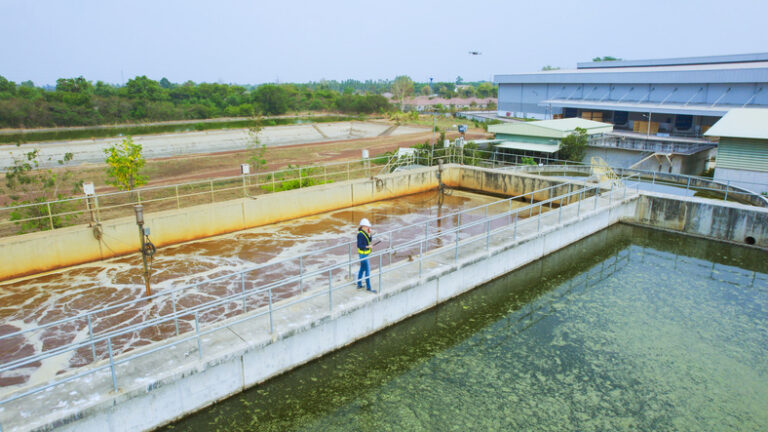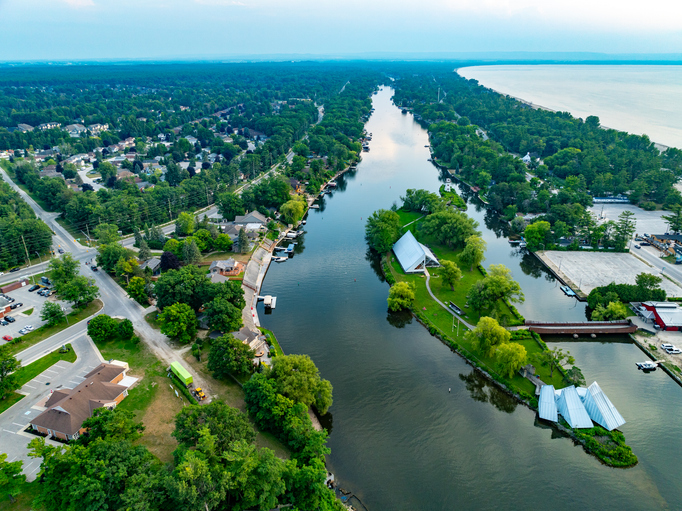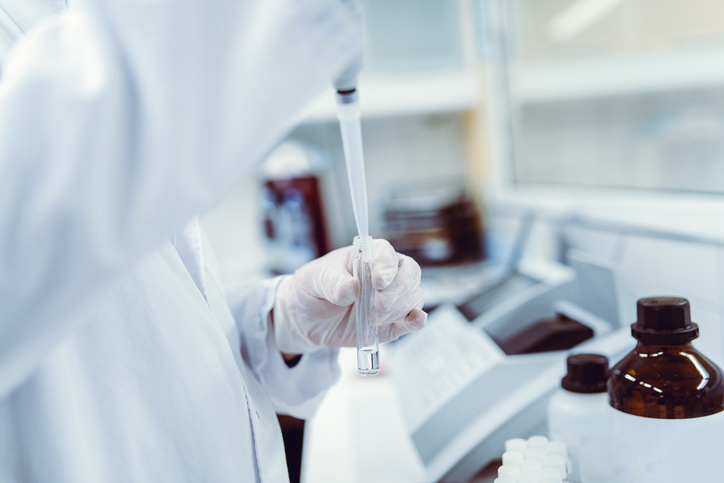As governments across Canada and around the world rally to address the coronavirus pandemic and the economic catastrophe it has unleashed, there is a slower-burning crisis that still needs attention. Water contamination and shortages have the potential to be far more devastating than our current situation if we don’t manage this resource better.
Charles Fishman, author of The Big Thirst, observed that water’s biggest problem is its invisibility. He said, “You don’t tackle problems that are out of sight. We need a new relationship with water, and that has to start with understanding it.” One of the many hidden issues for Canadians lies in the high levels of lead found in our tap water. A recent study showed a shocking 39 per cent of samples collected from cities across the country exceeded the national safety standard.
Our modern water crises stem from a lack of visibility which stems from a lack of data, and subsequent analysis to produce actionable insights. Modernizing our water data by using new technology such as the cloud, and seamlessly integrating the latest evolution of software analytics to comply with ongoing changes in regulations, will become a necessity to ensure safe drinking water. The good news is these technologies are getting easier to deploy and manage, regardless of the size and budget of the municipality.
Making water data accessible to protect life
In municipalities across Canada, aging pipes, changing climate, urban sprawl, population growth, toxic chemicals (PFAS), nutrients (HABs), pharmaceuticals, and reduced capital budgets are all serious threats that affect water quality. By successfully connecting water data, municipalities can get a handle on these issues, proactively predict water quality issues, and ultimately protect life with access to timely information.
For example, the City of Ottawa manages two surface water treatment plants and five groundwater well systems to deliver safe drinking water to over 850,000 Canadians. Following an E. coli outbreak in Walkerton in 2001, the City was spurred into action to connect their data and make it accessible to everyone who needed it.
Today, its data input and collection process includes over 100,000 test results per year from a number of different sources, both internal and external. Gwyn Norman, water quality data analyst at the City of Ottawa said, “We keep an eye on lead, disinfectant byproduct, and pH levels, among others, which helps us ensure good water quality for our customers. We also look at our data on a daily basis and analyze trends over time to optimize our treatment process and achieve financial savings.”
If you can’t manage it, you can’t act on it
There’s more data being collected from more sources of the water distribution cycle than ever before, and it’s no small task managing these continual feeds. To give you an idea, a municipality we work with recently put in 40 water quality monitoring sensors that generate over one million data points every year. Manual entry of this data can take an enormous amount of time and mistakes can be made, making analysis unreliable. Streamlining this process with automation is vital not only for the integrity of the data but also for what insights you gain from it, and proactive actions you take.
Modern data management and analytics allows municipalities to streamline regulatory compliance and increase access to all stakeholders to make faster, better decisions when it comes to protecting water. Simple tools like automatic alerts to the right people on any connected device when a set threshold is met, allows immediate action to prevent contaminants from going undetected.
Accessible water data changes attitudes
A recent report from the Canadian Water Network highlighted the mounting financial pressures facing Canadian water utilities. Balancing the Books: Financial Sustainability for Canadian Water Systems acknowledges the widening gap between citizen expectations and water system revenue to fully recover costs.
This is not just a Canadian problem, there are similar scenarios in cities and countries all over the world. Because water is largely unpriced, global water infrastructure is drastically underfunded. By sharing information with the public about water quality and conservation efforts in their communities, governments can help change attitudes about the value of water. When everyone can see and make sense of their community’s water data, they can all play a role in protecting the integrity of their water supply. Take that one step further to a global sharing of water data and we can adjust our behaviour even more.
Water data creates efficiencies and benefits industry
With around 60 hydroelectric generating stations, Hydro-Québec is one of the world’s largest hydroelectricity providers. It is able to achieve this thanks to the expansive hydraulic resources that reside within the province—some 4,500 rivers and a half million lakes.
Part of what makes Hydro-Québec successful is the flexibility that hydropower offers through regional cooperation. By monitoring power levels of neighbouring areas and contrasting against their own reservoir water levels, they are able to make strategic business decisions on how to optimally manage their water and energy reserves. As you might expect, this requires a lot of environmental data.
While water quality stewardship may not be their primary focus, energy providers such as Hydro-Québec are still important players within their regional watersheds. And with water data embedded at the core of operations, it increases the likelihood of that information being fit for sharing among internal and external stakeholders.
Breaking down data silos
Governments, utilities, and agencies across Canada are in various stages of maturity in collecting and analyzing water data from a variety of applications including stormwater, source water, drinking water, wastewater, pretreatment, FOG (fats, oils, and grease), backflow, and asset performance. The problem is much of this data is siloed in the individual organization and in some cases department.
Understanding the relationships between those consolidated water data sources is powerful. It can unveil insights we would never have found otherwise and offer correlations that we can use to test new hypotheses about the cause and effect of different water activity.
For example, changes in water temperature, pH, dissolved oxygen, nitrogen, and chlorophyll individually may not raise alarms but when read together, they indicate signs of agricultural runoff pollution that can cause harmful algal blooms. Having access to data that shows the presence of a high level of a contaminant in one part of a watershed helps inform everyone else in the watershed of its presence, allowing them all to use the data to try and track down the source.
The first milestone on the journey to a sustainable water system is to break down some of the many data silos that currently exist and connect all stakeholders. This could include laboratories, all departments of municipal water and waste, residents, businesses, and environmental agencies—essentially all entities that are served or affected by a water system. Many water organizations are entrenched in legacy systems which can hinder progress. While others have been automating data collection in several areas for some time (e.g. via SCADA), few are examining the data sources alongside other data sources (like LIMS, GIS, billing data, compliance data, etc.) to connect the dots and uncover real insights.
Roadmap for accessible water data
To secure a budget for valuable data initiatives, governments, utilities, and industries that manage and use water should try to solve a small data problem like connecting lab data to compliance data.
By showcasing the results from these small data wins, organizations can unlock more funding to build the people, process, and technology required for more advanced data initiatives.
The small data wins can help organizations make real strides towards reaching the four key water data management milestones:
- Water data fusion to break down data silos.
- Water data analysis to turn raw data into actionable insights.
- Internal knowledge sharing across organizations, government departments, and international bodies.
- External knowledge sharing with industry and the public to educate, inform, and encourage respect for our most important resource.
The more our infrastructure deteriorates, the more cost it takes to fix. We have to fix it, or the risk of contamination increases, and the supply continues to decrease. In order to budget, we need data. As long as that data remains hidden or unused, we won’t be able to surface it to rationalize budgets. And without technology, we’ll spend an increasing amount of time trying to get the data we need while our resources continue to shrink and the cost to repair and build for the future rises.
It’s critical that municipalities have a clear data roadmap and recognize that the true power comes from sharing our insights and collectively creating and protecting a clean water world.
This article was written by Edward Quilty—the founder, president, and CEO of Aquatic Informatics—for the July/August 2020 issue of Water Canada. Aquatic Informatics provided the header image for this article.











